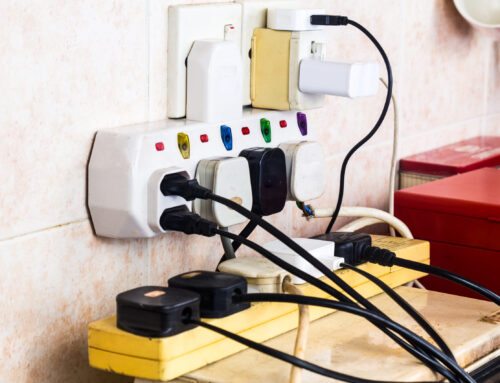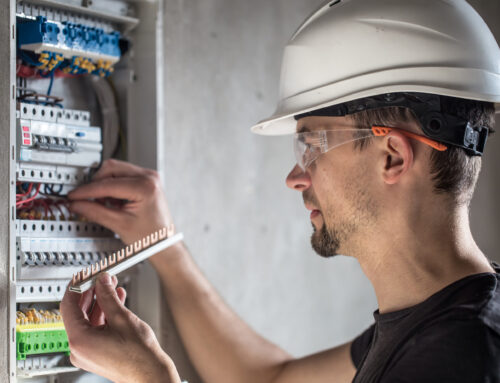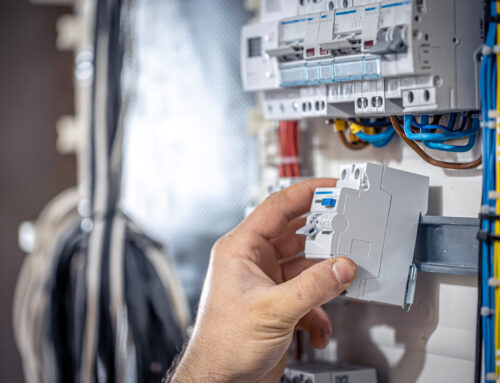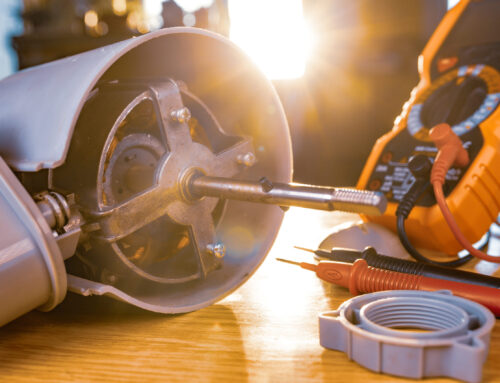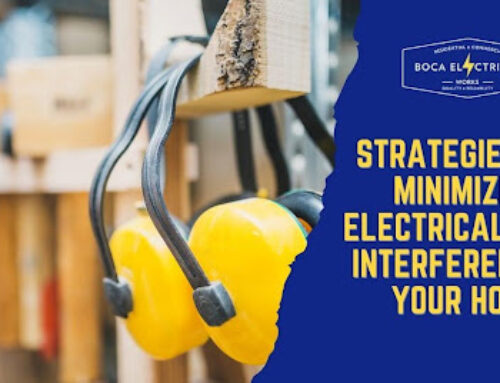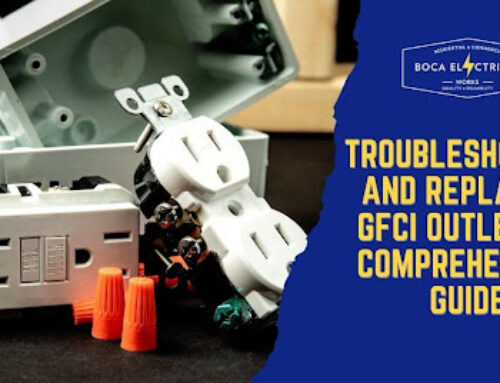Maintaining Stable Voltage: Tips for Managing Fluctuations in Your Home
In the comfort and safety of our homes, the stability of electrical voltage plays a pivotal role that often goes unnoticed—until it doesn’t. The foundational role of residential electrical wiring in maintaining this stability cannot be overstated, acting as the silent guardian of our daily convenience and safety. Voltage fluctuations, though seemingly minor, can have far-reaching effects on the lifespan of appliances and, more critically, on home safety. In this article, we’ll explore practical tips and solutions for managing voltage fluctuations, ensuring your home remains a sanctuary of safety and efficiency. With a blend of expert advice and actionable strategies, we’re here to guide you through stabilizing your home’s electrical environment.
Understanding Voltage Fluctuations in Your Home
Understanding voltage fluctuations in your home begins with recognizing the role of stable electrical supply in maintaining the health and efficiency of your home’s infrastructure. These fluctuations, essentially variations in the electrical voltage that can occur unpredictably, are not just nuisances—they can have profound effects on the safety and longevity of electrical appliances and systems. At the heart of managing and mitigating these fluctuations is the residential electrical wiring system, which acts as the backbone for distributing power throughout your home. Here, we delve into the intricacies of voltage fluctuations by exploring:
What Voltage Fluctuations Are
Voltage fluctuations refer to variations in the electrical supply that deviate from the normal voltage range expected by electrical appliances. These fluctuations can either elevate above or drop below the designed operating voltage, affecting the performance and lifespan of household devices.
Common Causes
The roots of voltage fluctuations often lie in heavy electrical loads that exceed the capacity of a home’s electrical system, faulty or aging residential wiring, and inconsistencies in the utility service. The condition of “electrical wiring residential” systems is paramount, as they directly influence a home’s ability to manage and stabilize voltage levels, preventing undue stress on electrical appliances.
Potential Impacts
Voltage fluctuations can have several detrimental effects on a home’s electrical ecosystem. Appliances may operate less efficiently, consume more power, or suffer from reduced lifespan. More critically, fluctuations increase the risk of electrical fires and pose significant safety hazards, highlighting the immediate need for effective management solutions.
The Role of Residential Electrical Wiring
A robust, well-maintained residential electrical wiring setup is crucial in countering the adverse effects of voltage fluctuations. It acts as a home’s primary defense, ensuring that electrical systems run smoothly and safely. By preventing excessive wear and tear on appliances and reducing the risk of electrical hazards, good electrical wiring supports a stable, efficient, and safe electrical infrastructure in residential settings.
The Signs of Voltage Fluctuation

image for Maintaining Stable Voltage: Tips for Managing Fluctuations in Your Home
Homeowners may encounter several telltale signs indicating the presence of voltage fluctuations within their electrical systems. These signs serve as critical alerts, prompting the need for closer inspection and potentially professional intervention.
- Flickering or Dimming Lights: Perhaps the most noticeable indicator, lights that flicker or dim unexpectedly can signal inconsistent voltage supply, especially if observed across different fixtures simultaneously.
- Malfunctioning or Resetting Appliances: Appliances that frequently malfunction, reset on their own, or exhibit erratic behavior may be responding to fluctuations in their electrical supply. This inconsistency can affect both performance and operational reliability.
- Unusual Sounds from Electrical Devices: Buzzing or humming sounds from lights, switches, or electrical panels are not normal. Such auditory cues can indicate that these components are struggling to manage fluctuating voltage levels.
- Overheating of Electrical Devices: Voltage fluctuations can cause devices to overheat, even when operating under normal conditions. Overheating not only damages the internal components of these devices but also poses a significant fire risk.
Solutions to Stabilize Your Home’s Voltage
Stabilizing your home’s voltage is essential for the safety, efficiency, and longevity of your electrical appliances and systems. Employing strategic solutions can mitigate the risks associated with voltage fluctuations. Below, we explore several effective measures homeowners can take, each addressing different aspects of voltage stabilization.
Installing Home Voltage Stabilizer Systems
Voltage stabilizers are designed to automatically adjust the voltage to your home, ensuring that it remains within a safe range for your appliances. Home Voltage Stabilzers Systems has the following features:
- They detect fluctuations in the incoming power supply
- Correct voltage supply before they reach your devices
- Effectively preventing damage caused by overvoltage or undervoltage.
When selecting a voltage stabilizer, consider the total load of the appliances you need to protect, the type of stabilizer (servo-controlled or static), and features like surge protection and digital display.
Upgrading Your Electrical Panel
- Importance: Central hub for home’s electrical distribution, impacts voltage stability.
- Benefits: Supports modern electrical demands, reduces risk of fluctuations, increases safety against fires and shocks.
- When to Upgrade: Outdated or overloaded panels can cause issues.
The Role of Surge Protection Devices
- Function: Defend against transient spikes in voltage from external disturbances.
- Types: Whole-house surge protectors (at electrical panel) and point-of-use protectors (plug into outlets).
- Benefits: Prevent damage to electronics, contribute to voltage stability.
- Installation Tips: Look at energy absorption rating and response time for optimal protection.
Preventive Measures and Maintenance
Maintaining a stable voltage within your home is not only about implementing solutions but also about adopting regular preventive measures and maintenance practices. By being proactive, homeowners can significantly reduce the risk of voltage fluctuations and extend the lifespan of their electrical appliances.
- Routine Inspection of Electrical Outlets and Switches: Regularly check your outlets and switches for any signs of wear and tear, discoloration, or burning smells. These can indicate loose connections or damaged wiring that may lead to voltage issues.
- Test Your Home’s Grounding System: A properly grounded electrical system is crucial for voltage stability. Use a grounding tester to check the grounding status of your outlets, a simple DIY task that can prevent major issues.
- Monitor Your Electrical Load: Be mindful of the overall electrical load on your system, especially during peak usage times. Overloading circuits can cause voltage drops. Consider spreading out high-usage appliances’ operation times.
- Invest in a Quality Multimeter: With a multimeter, you can measure voltage levels in various parts of your home. Regular monitoring can help you spot inconsistencies early, before they escalate into more significant issues.
- Schedule Annual Inspections by a Professional: For aspects beyond DIY capabilities, such as comprehensive system checks and panel inspections, hiring a professional is invaluable. Look for “Residential electrician services” to ensure a thorough evaluation and maintenance of your home’s electrical system.
Key Takeaways
Maintaining stable voltage in your home is crucial for the safety and efficiency of your electrical appliances and systems. This article highlighted the significance of recognizing the signs of voltage fluctuations, such as flickering lights and malfunctioning appliances, as early indicators of potential electrical issues. By understanding these signs, homeowners can take timely actions to prevent damage and ensure their home’s electrical system operates optimally.
Preventive measures and regular maintenance, ranging from DIY electrical checks to professional inspections, are essential for long-term voltage stability. Homeowners are encouraged to engage in routine inspections, understand their home’s electrical load, and invest in tools like multimeters for early detection of voltage issues. For more comprehensive assessments and complex maintenance tasks, the expertise of residential electrician services is invaluable.
People Also Ask
Understanding voltage fluctuations and their potential impact on electrical systems is crucial for maintaining a safe and efficient home environment. Here are some common inquiries related to voltage fluctuations and electrical safety:
What causes sudden voltage spikes in homes?
Sudden voltage spikes in homes can be caused by various factors such as lightning strikes, power surges from utility grid issues, switching on or off large appliances, malfunctioning electrical equipment, or faulty wiring, all of which can lead to temporary increases in voltage levels.
Can voltage fluctuations damage LED lighting?
Yes, voltage fluctuations can damage LED lighting by causing flickering, premature failure, or reduced lifespan, as LEDs are sensitive to changes in voltage and may not operate correctly outside their specified voltage range.
How often should electrical wiring be inspected for safety?
Electrical wiring should be inspected for safety by a qualified electrician at least every 5 to 10 years, or sooner if there are signs of wear and tear, such as frayed insulation, overheating outlets, or frequent electrical issues, to ensure it meets modern safety standards and prevent potential hazards.
What’s the difference between a voltage stabilizer and a UPS?
The main difference between a voltage stabilizer and a UPS (Uninterruptible Power Supply) lies in their functionality: a voltage stabilizer regulates and maintains a steady voltage output to protect devices from voltage fluctuations and power surges, while a UPS provides backup power during outages and may include voltage regulation features as well.
Are older homes more prone to voltage fluctuations?
Older homes may be more prone to voltage fluctuations due to outdated wiring, inadequate grounding, and less robust electrical systems compared to newer constructions, which can make them susceptible to voltage variations caused by external factors or internal electrical issues.
Contact Bocaelectrical for Expert Electrical Solutions
Are you concerned about voltage fluctuations affecting your home’s safety and efficiency? Contact Bocaelectrical today for a professional assessment of your electrical system. Our team of experienced electricians is dedicated to providing safe, efficient, and reliable electrical solutions tailored to your needs. Don’t wait until voltage issues escalate – take proactive steps to safeguard your home with Bocaelectrical’s expert guidance and services. Schedule your assessment now.



